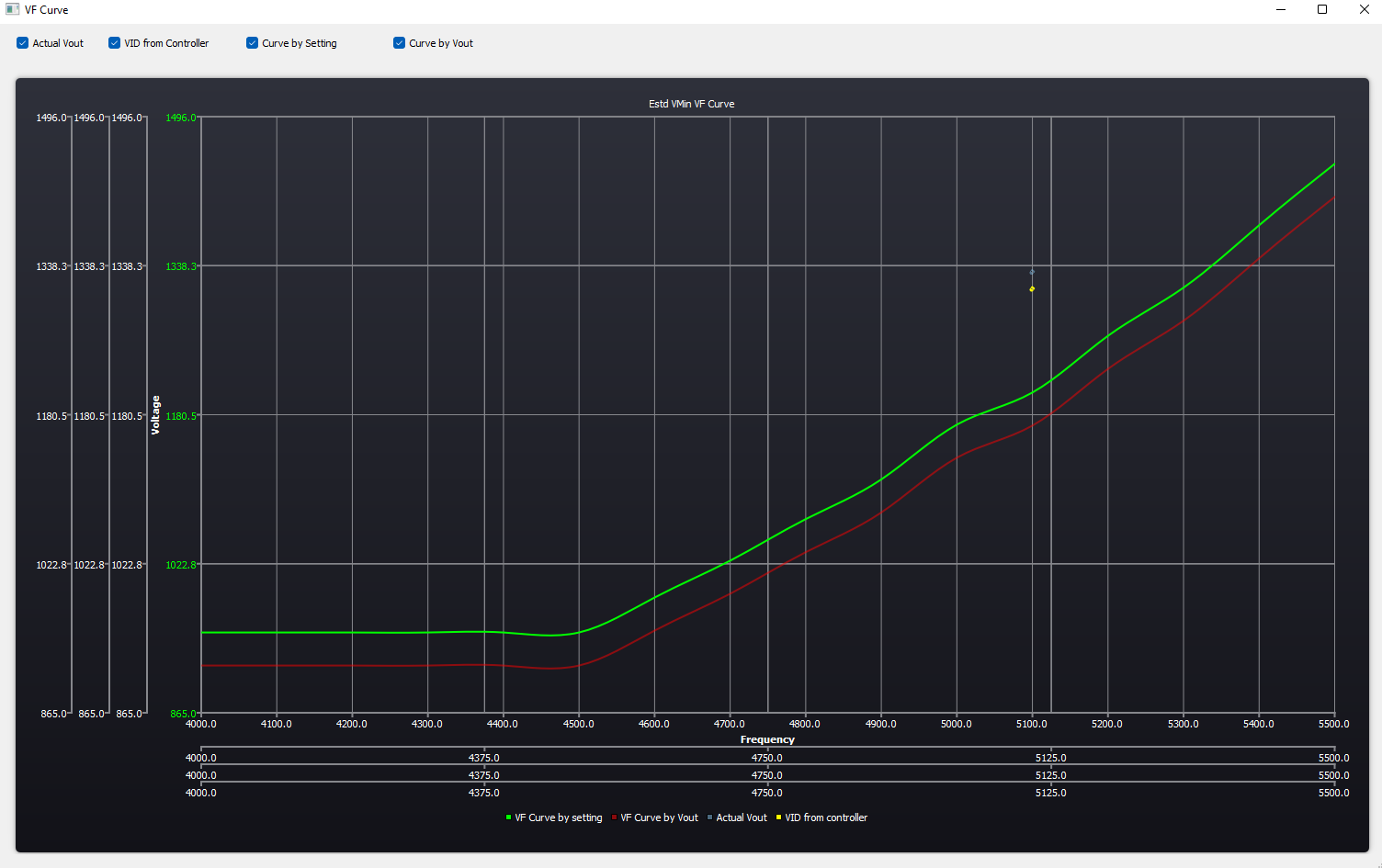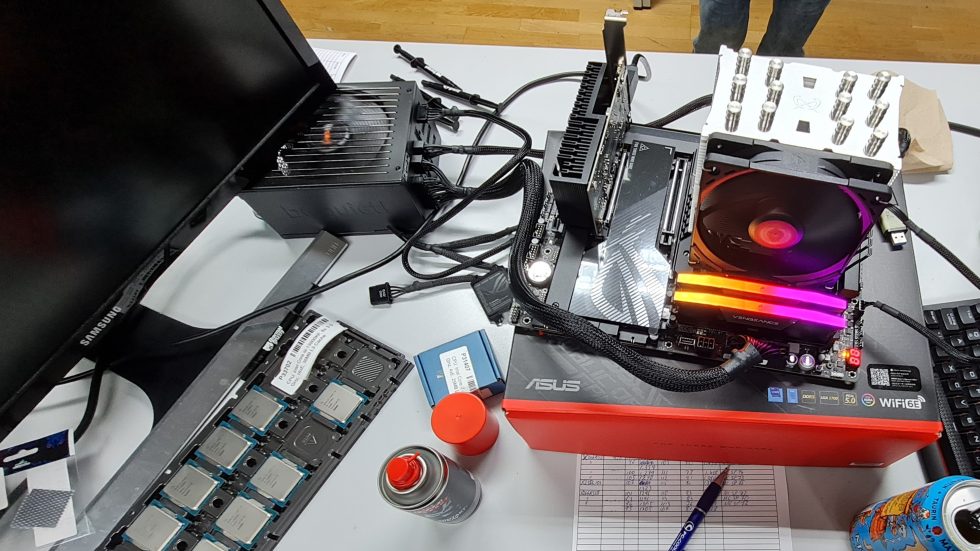Just in time for Christmas we have something special for you today. With the help of MIFCOM, we were allowed to bin a statistically not insignificant amount of CPUs (over 500 in total) and today we have the evaluation for you to browse through. Intel 13th Gen Raptor Lake CPUs are the topic today and this time we even covered all overclockable K-SKUs, from i5, over i7, to i9. Today we’ll be looking at the latter, i.e. the i9-13900K and i9-13900KF CPUs. We will visit the other SKUs as soon as the data is processed.
But what is “binning” again?
Simply put, each individual CPU is a bit different from the factory, so some can be clocked better or require less voltage for the same clock, and some require more voltage. To compensate for this, Intel already tests each CPU for its silicon properties during production and then stores a special V/F curve for each individual chip, which defines how much voltage is requested from the motherboard at which clock (SVID). This compensates for manufacturing-related tolerances and ensures that each CPU is always stable while operating as cool and efficiently as possible.

Exactly this V/F curve can now be used to infer the quality of the respective CPU and vice versa to find the CPUs that can be overclocked as high as possible. To facilitate this, Asus has already integrated the Silicon Prediction (SP) feature on their Maximus and Strix motherboards for several generations. Here, a single number is generated from the V/F table with a mathematical formula as an evaluation of the silicon quality. A higher SP rating then simply means a better CPU, a lower rating a worse CPU.
It may sound simple now, but it’s not really. Intel’s CPUs have P and E cores with different clock characteristics since the 12th generation, each core is also slightly different, which leads to uncertainties in the evaluation with up to 24 cores per CPU, and finally, each CPU has to be installed in a motherboard, put into operation and the resulting values documented to read out the V/F table and SP values, not to mention the processing and interpretation of the collected data.
Multiplied by the amount of CPUs, this quickly becomes a massive effort that can only be managed as a team. I am all the more grateful that I was invited to MIFCOM together with overclockers Bullshooter, Sergmann, DaGunzi, and quiekMew and that we were allowed to go on a search for the best of the best chips. The data collected and initial findings are here for you today as a point of reference for your personal gold hunt or simply as a (hopefully) interesting read.
Test methodology and hardware

The tests were run on an Asus Maximus Z790 Hero motherboard with BIOS 0031. The “MC SP” feature for evaluating the memory controller is only available from this BIOS version. Together with a Corsair Vengeance RGB DDR5-5600 RAM kit (Samsung 16 Gbit B-Die) as platform, each CPU was tested briefly. The system is booted without an operating system and then the SP values are read from the BIOS. Then the system is switched off again and the next CPU is installed.

































31 Antworten
Kommentar
Lade neue Kommentare
Urgestein
Veteran
Mitglied
Veteran
Mitglied
Veteran
1
Urgestein
Moderator
Mitglied
Urgestein
Urgestein
Veteran
Mitglied
Urgestein
Urgestein
Mitglied
Urgestein
Urgestein
Alle Kommentare lesen unter igor´sLAB Community →